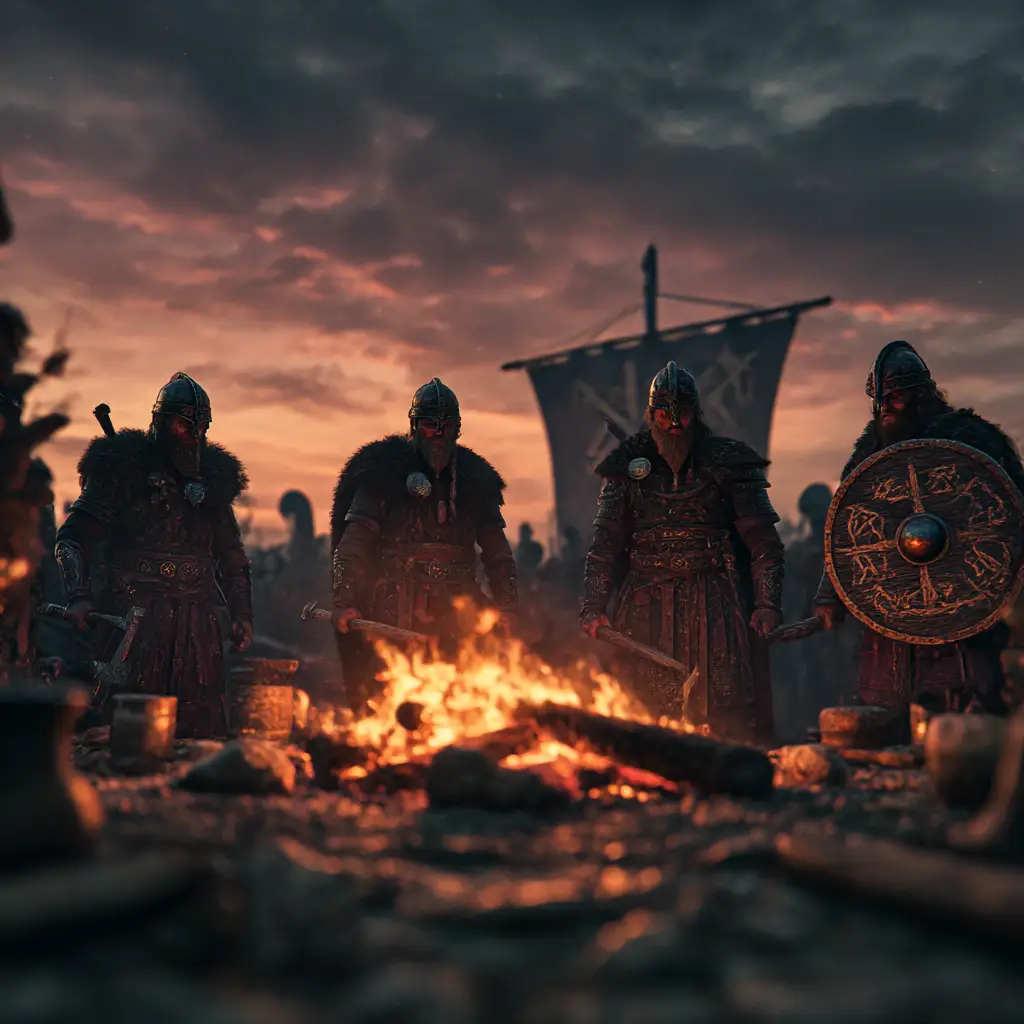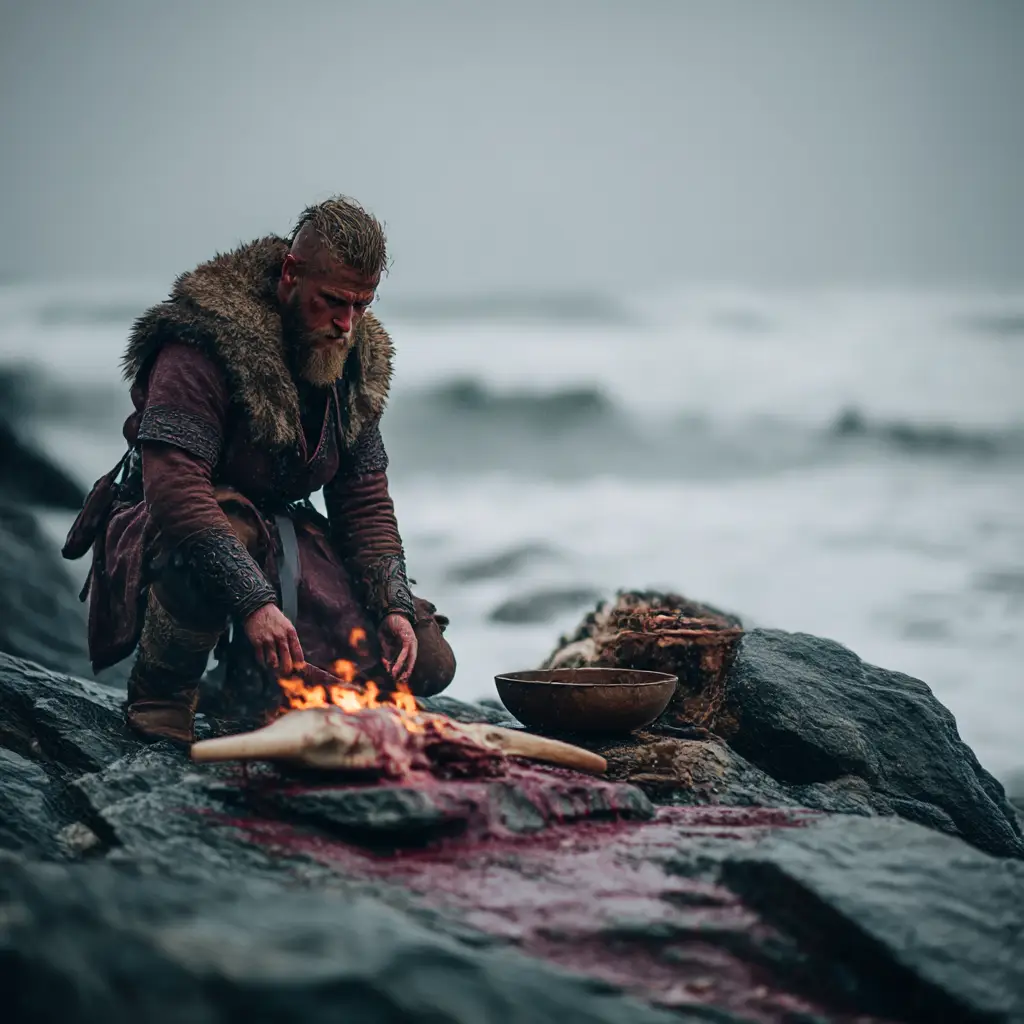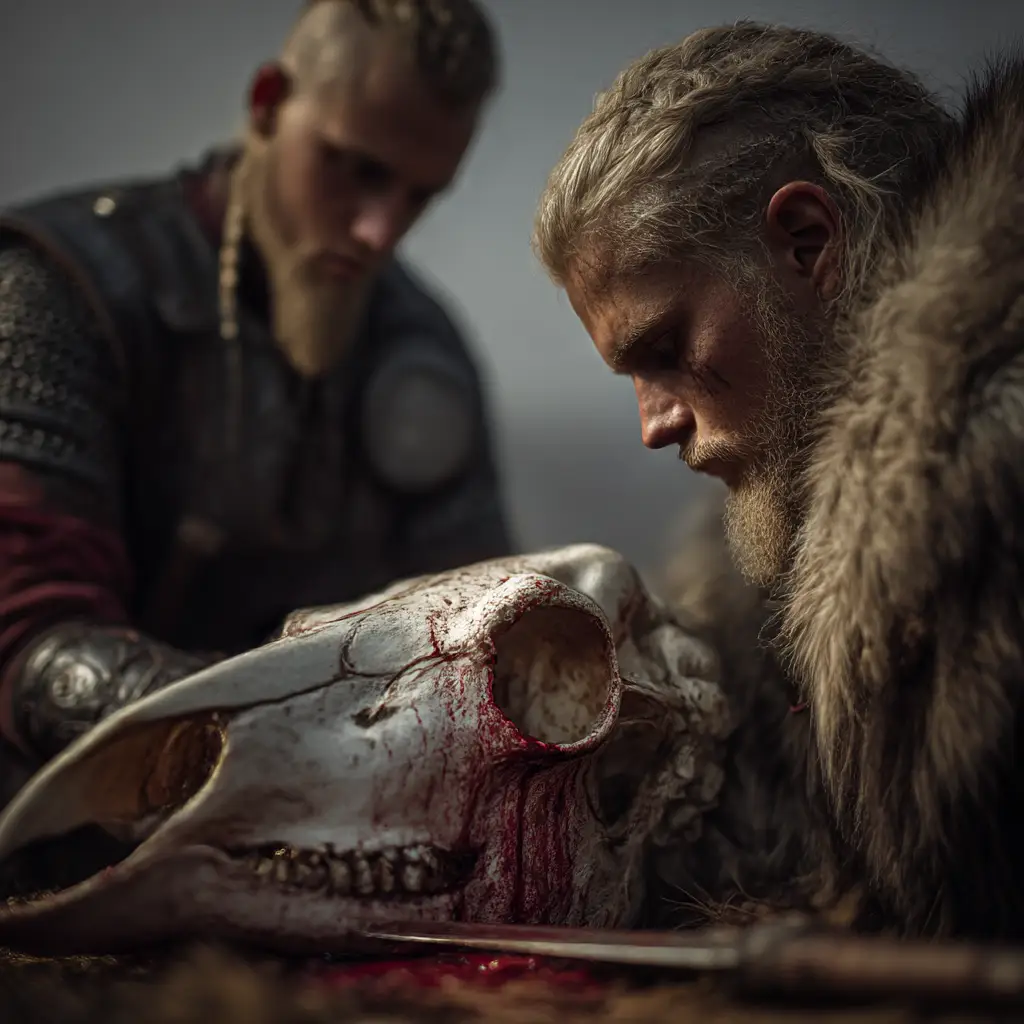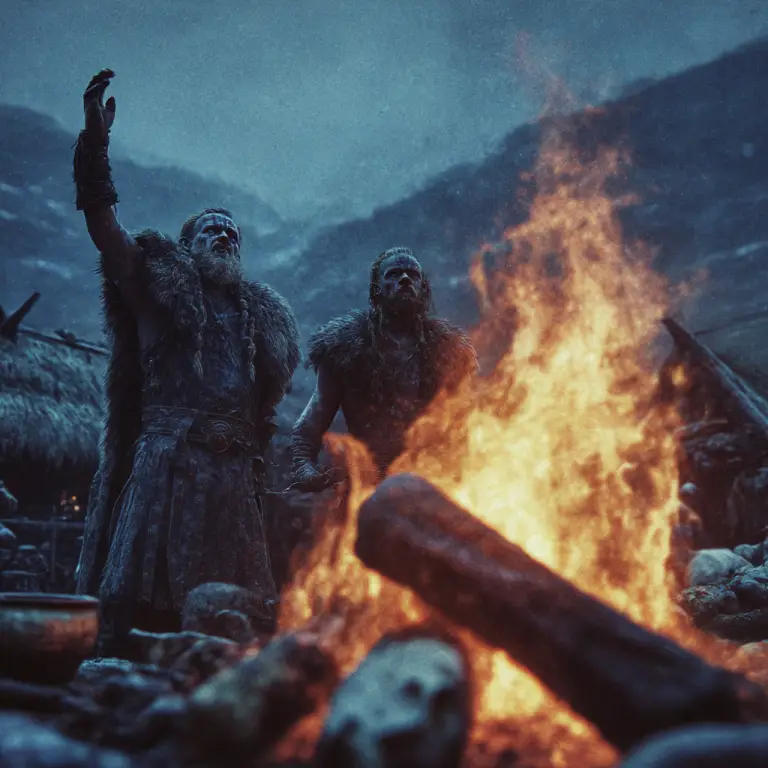Did the Vikings Sacrifice?
Sacrifice played an important role in Viking Age religion and society. The people of Scandinavia believed that offerings maintained balance with the gods, spirits, and natural forces that governed their world. Known as blót, these rituals were carried out in both private households and larger community gatherings.
Sacrifices could take different forms. The most common were offerings of food, drink, and valuable objects such as weapons or jewellery. Animals, particularly horses, pigs, and cattle, were also offered. Archaeological finds at sites like Uppsala in Sweden and Hofstaðir in Iceland provide evidence of animal remains linked to ritual activity. These acts were not seen as wasteful but as necessary gifts to the gods in exchange for prosperity, fertility, and protection.
The question of whether the Vikings practised human sacrifice is more complex. Written sources from outside Scandinavia, such as accounts by Arab traveller Ahmad ibn Fadlan and later Christian chroniclers, describe rituals where humans were sacrificed, often during funerals or in times of great need. Archaeological evidence is less conclusive, though some burials suggest that slaves or captives may have been killed to accompany their masters into the afterlife.
Seasonal festivals were important occasions for sacrifice. The midwinter feast, often linked to Yule, was a time to honour the gods and ancestors, while spring and harvest rituals focused on ensuring good crops and safe journeys. These ceremonies were both religious and social events, strengthening community bonds.
With the arrival of Christianity in Scandinavia during the 10th and 11th centuries, sacrificial practices gradually declined. Christian missionaries and rulers discouraged the old rituals, replacing them with church ceremonies and new traditions. By the end of the Viking Age, blót had largely disappeared, though echoes of it remain in later folklore and seasonal celebrations.
Sacrifice in Viking culture was therefore not merely an act of devotion but a central part of maintaining harmony between people, nature, and the divine. It reveals much about the values and beliefs of a society that saw itself as deeply connected to the unseen world.



